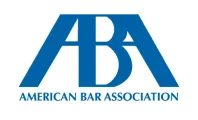Absolutely the best attorney for getting your VA benefits. After 7 years of denial, I found Brendan Garcia of VetLaw, He reviewed my case, set up a plan , scheduled my video hearing in front of a Veteran law judge, flew out to Phoenix to be there with me during the hearing. Hired a doctor to help draft a report to help my case. When all the smoked cleared, I’m now collecting max disability monthly, back pay beyond my wildest dreams. Brendan Garcia never stopped. He is an expert in Veterans law. Best decision of my life was to have him on my side. Bar none, Brendan is a terrific VA benefits attorney!
Summary
- Veterans may be entitled to financial relief through AFFF firefighting foam lawsuits because manufacturers concealed the health risks associated with toxins in the product.
- Exposure to AFFF firefighting foam is often linked to military service.
- Forever chemicals, or PFAS, can cause veterans who used AFFF to develop health issues including kidney cancer, high cholesterol, and hormone imbalances, among other problems.
AFFF Firefighting Foam Exposure: Know Your Rights as a Veteran
As we have become more cognizant of the dangers of exposure to toxic forever chemicals, the military’s use of AFFF firefighting foam has been thrust into the spotlight. The foam contains contaminants linked to cancer, among other health problems.
Veterans who worked with or in close proximity to AFFF should speak with a VA disability benefits attorney about filing a claim for AFFF firefighting foam-related health issues.
Our team at VetLaw is actively accepting AFFF firefighting claims from veterans who have been financially, medically, and emotionally harmed by significant exposure to destructive chemicals during their time in the military.
You can schedule a free consultation with one of our AFFF firefighting foam lawyers by calling (855) 738-6732 or submitting an online contact form.
Personal Injury Claims for Veterans: Expert Legal Guidance from a VetLaw?
As a law firm founded by a vet, we hold ourselves to a high standard when it comes to serving the military community. Our clients receive an individualized assessment of their case and practical legal advice throughout the personal injury claims process.
You will have our unwavering support from the first consultation to the final resolution.
We have specific experience helping veterans impacted by toxic exposure, like our work with VA burn pit claims. What this means for you is that our team is already familiar with the common consequences of toxic exposure and how vets are already at risk.
So, we can anticipate the types of damages you are likely to experience and use this insight to the advantage of your AFFF firefighting foam claim. In turn, this increases your likelihood of securing the benefits you need.
Get to Know VetLaw Through Our Glowing Reviews and Case Results
If you have developed a chronic or even life-threatening health condition after occupational exposure to AFFF during your military service, you likely have legal options for pursuing compensation. How effective that effort is depends on the kind of VA disability claims attorney you hire.
Our team of AFFF firefighting foam attorneys at VetLaw is dedicated to maximizing your VA benefits, but you don’t have to just take our word for it. Here’s a sample of what our former clients have to say:
“Brendan Garcia never stopped. He is an expert in veterans’ law. Best decision of my life was to have him on my side.”
“VetLaw is an outstanding and Veteran driven organization. From the onset of taking my case 4 years ago they have updated, guided, and shared progress and finally success in my case.”
“I saw an ad online for Veterans Law Firm. This is when I called Brendan Garcia. He took my call personally, looked up my record from his office and in less than 14 months, took care of everything in a military, no frills, proper way.”
Urgent Updates For Veterans on the AFFF Firefighting Foam Lawsuits
Don’t miss out on the latest information about the AFFF firefighting foam plaintiffs’ march toward fair compensation.
February 2024
There are now nearly 7,000 AFFF firefighting foam lawsuits under the umbrella of the multidistrict litigation. A portion of these are water contamination claims. The water contamination lawsuits were brought by local utility providers demanding AFFF manufacturers help clean up their tainted water supplies.
This group of AFFF lawsuits has more or less been settled. Chemical manufacturers agreed to pay over 10 billion dollars to reimburse the water providers for the costs of cleanup.
Some of the defendants involved in this settlement are making noise about going bankrupt due to paying out these damages. Supposedly, that would render them unable to compensate individual AFFF plaintiffs. Or, they would only be able to offer them pennies on the dollar for their claims.
However, this argument does not hold water. Representatives for the defendants are deploying this as a negotiating tactic to get plaintiffs to concede to lower settlements.
Next on the agenda is a Case Management conference scheduled for March 1st, 2024.
Vets May Have Been Exposed to Toxic AFFF Through Their Military Service
Many veterans are recognizing that they were potentially exposed to carcinogens and other toxins while serving in the military, particularly in light of the passage of the PACT Act.
Right now, AFFF firefighting foam is receiving a lot of attention because it has been identified as a significant source of toxic exposure to per- and polyfluorinated substances (PFAS) among military members.
AFFF is commonly used by military firefighters and in locations where explosions could prove catastrophic. Military members who handle AFFF or work in environments where AFFF is regularly discharged can accumulate PFAS through inhaling or absorbing particulate matter, such as residue clinging to their turnout gear.
Navy and Air Force vets may be at an increased risk of PFAS exposure through AFFF. These branches have historically relied heavily on the product to handle fires in contained spaces like submarines and fires involving flammable liquids like jet fuel, respectively.
Once the PFAS reach a certain concentration in the body, they can trigger cancer, damage organs, and interfere with normal processes. It is also worth noting that over 20% of civilian firefighters are veterans, so for a considerable number of military service members, exposure to AFFF doesn’t end when they are discharged.
What is AFFF Firefighting Foam and Why Do Scientists Believe it is a Major Health Hazard
AFFF is a white, frothy compound that firefighters spray on fire to smother it. The foam works by lowering the temperature of the fire and coating the fuel source to cut off its oxygen supply. AFFF is favored over water to extinguish Class B fires, which are fires caused by a liquid fuel source like jet fuel or gasoline.
Where water makes Class B fires worse, AFFF has oil-resistant properties thanks to PFAS. That allows AFFF to isolate the elements of the fire from one another and put out the flames.
Veterans, activists, attorneys, and even legislators have been sounding the alarm about Aqueous Film-Forming Foam given that one of its key components is a cancer-causing substance.
Basically, the issue boils down to the following:
- AFFF firefighting foam has unsafe levels of a type of man-made chemicals called PFAS.
- PFAS take a lifetime to break down once they are absorbed. That makes it easy for them to become concentrated in a person’s system.
- There is strong evidence that PFAS cause adverse health outcomes in humans, such as cancer.
Common Service-Related Disabilities Caused by AFFF Firefighting Foam Exposure
Chemical manufacturers like 3M have records dating back to the 1960s showing they knew that PFAS were toxic to humans. Unfortunately, they kept this information to themselves. We are still discovering precisely how forever chemicals harm people.
What is clear is that per- and poly-fluorinated substances can have an array of effects on the human body. Right now, the strongest evidence connects significant AFFF exposure to the following:
- Cancer, particularly kidney and testicular cancer
- Infertility or difficulty conceiving
- High blood pressure levels in pregnant women
- Increased cholesterol levels
- Obesity
- Thyroid disease
- Damped immune response
- Physical and cognitive developmental issues in children
As discussed, research into the effects of PFAS is ongoing. Veterans who worked with AFFF may also be at an increased risk of developing:
- Type II diabetes
- Liver cancer
- Prostate cancer
- Male breast cancer
- Pancreatic cancer
- Bladder cancer
- Ulcerative Colitis
Type of Damages Veterans Can Recover in an AFFF Firefighting Foam Lawsuit
Veterans who developed service-related chronic health problems and diseases after prolonged exposure to AFFF could potentially qualify for disability benefits with the VA. However, many vets are also seeking compensation for their damages in product liability lawsuits.
If you were injured by AFFF while working as a civilian or you want to explore filing a personal injury claim in addition to your VA claim, you should read this page on AFFF. Possible damages in the AFFF firefighting foam lawsuits may include the following.
Medical bills: Even with health insurance, treating a condition like cancer is exorbitantly expensive. Veterans receiving care for chronic conditions like high cholesterol may accumulate medical bills for the rest of their lives.
You can claim damages for prescriptions, lab tests, chemotherapy, CT and MRI scans, insulin pumps, and more. VA disability benefits can also help cover these costs.
Stunted career and lost wages: Health issues caused by AFFF exposure can cost vets wages as they seek treatment, or become serious enough to force them into early retirement. Also, vets who served as firefighters may face more limited career opportunities if they cannot perform the physically demanding jobs that align with their skills.
If you can no longer earn what you should be able to due to a physical health condition caused by exposure to PFAS in AFFF, you may also be eligible for compensation for reduced earning capacity.
Emotional costs: Your PFAS-related health issues may temporarily or permanently deprive you of valuable things that don’t have a price tag. For example, you could lose your independence, the ability to go about your daily life without pain or debilitating exhaustion, and an intimate relationship with your spouse. Damages like pain and suffering or loss of consortium account for these losses.
Why VetLaw is the Best Choice to Handle Your Product Liability Claim
At VetLaw, we can provide the robust representation you deserve for your AFFF firefighting foam lawsuit. Our client-centered approach has proven effective time and again over the past decade. We also understand the domino effect a service-related disability can have on a veteran’s life and the way that toxic exposure and defective products can be interconnected.
For example, say a firefighter develops obesity due to exposure to toxic AFFF foam while on active duty. To treat their obesity and reduce their risk of acquiring Type II diabetes, their doctor prescribes Ozempic. The vet develops stomach paralysis caused by Ozempic, compounding their damages.
VetLaw is not only aware of the common complications vets face, but we also have the resources and legal acuity to help them recover the compensation they need. We have experience handling a broad spectrum of claims where vets were uniquely vulnerable to injury from defective products, such as CPAP toxic foam lawsuits to Suboxone tooth decay lawsuits and more.
Speak With a Capable AFFF Firefighting Foam Attorney From VetLaw to Get Started
AFFF firefighting foam manufacturers jeopardized the health of veterans in favor of profits. Our team at VetLaw is ready to take them on. We have a history of adeptly navigating the bureaucracy of the VA as veterans disability claim attorneys. Our prior experience has primed us to handle the complexity of VA disability claims involving AFFF firefighting foam.
There’s no need to suffer alone. The AFFF firefighting foam attorneys of VetLaw are prepared, dedicated, and available to help you maximize your benefits. We encourage you to get in touch with us as soon as possible by calling (855) 738-6732 or submitting an online contact form.
Frequently Asked Questions
What is the military doing about AFFF firefighting foam?
While it would be incredibly dangerous for the military to operate without an effective and reliable method of fire suppression, the government has acknowledged that the health hazard AFFF presents warrants exploring other options. The military is taking the following actions given the risks of exposure to AFFF:
- Conducting research to create a new product to replace AFFF
- Collecting and testing water and soil samples from military installations all over the U.S. to check their PFAS levels
- Initiating cleanup efforts in locations with concerning levels of PFAS contamination
- Drastically reducing the use of AFFF and switching it out for water where possible
- Aiming to phase out Aqueous Film-Forming Foam by the end of 2024 at the direction of the government
Is occupational exposure the only way that you can come into contact with AFFF?
Environmental exposure is another concern. The water supplies of communities near military bases often have higher rates of harmful chemicals like PFAS in their samples. When service members use AFFF in training exercises or to extinguish a fire, the foam still has to go somewhere.
Oftentimes, that means it is absorbed into the soil and water, where it gets into drinking water and even food. As the military learned with the Camp Lejeune water contamination fiasco, swift and comprehensive action is necessary to limit the scope of the damage.
Unfortunately, toxins from AFFF have already polluted water supplies across the U.S. That does not necessarily mean all contamination sites have unsafe levels of PFAS. However, it does underscore the ubiquity of the issue.
Who are the defendants in the AFFF firefighting foam lawsuits?
The major AFFF defendants include several chemical manufacturers. 3M has already announced it will stop using PFAS in its products, but it remains potentially liable for the harm its actions have caused in the AFFF firefighting foam lawsuits. Notable AFFF defendants include:
- DuPont
- 3M
- Chevron
- Chemguard
- Chemours
- Corteva










